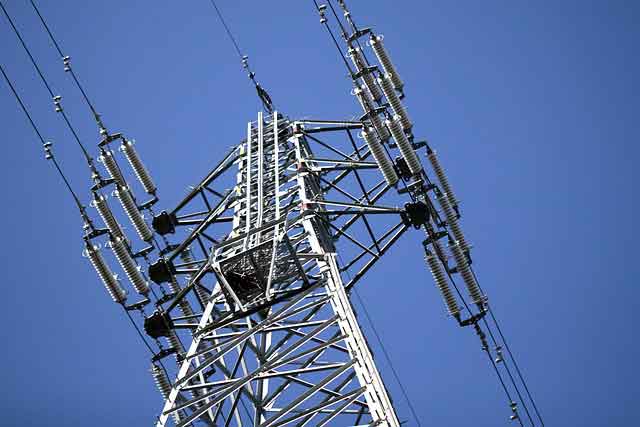How one man stopped Toronto Hydro
TORONTO, ONTARIO - Roy Wright has spent 40 years taking special care of the precious piece of Toronto waterfront that stretches for miles outside his Scarborough Bluffs home.
He picks up litter from the rugged shoreline, paints watercolours to raise money for community efforts and ends most days quietly giving thanks for the green-blue expanse of Lake Ontario before him.
So when Wright found out almost three years ago that Toronto Hydro was thinking of erecting 60 to 100 massive wind turbines right in his watery backyard, not to mention the path of birds, Monarch butterflies and even lowly bats, he penned 500 “My Dear Neighbour” letters.
They unwittingly turned the retired high school art teacher into a civic activist, quasi engineer and now — with the help of a few dozen new friends — slayer of a power giant.
“Everybody was telling me, ‘You don’t have a chance, Roy. It’s Toronto Hydro with all the money in the world...’” he says.
No one was more surprised than 68-year-old Wright, his wife Denise and their partner in battle John Laforet, president of Wind Concerns Ontario, when the provincial government quietly announced that itÂ’s abandoning plans to build offshore wind projects.
“The first domino has fallen,” says Laforet, 24, who believes it won’t be long until the plug is pulled on onshore wind turbines as well. Already some 700 wind turbines across Ontario have spurred more than 100 complaints about health issues ranging from headaches to nose bleeds and ringing ears, he says.
The timing is hardly coincidental with the province inching closer to an October election and the Liberals fearful the thorny wind turbine issue could hurt them in rural areas now up for grabs, says Laforet, whose group represents some 57 community organizations, including WrightÂ’s Save the Toronto Bluffs.
“Two years ago then energy minister George Smitherman said we were absurd and had worked ourselves into an artificial lather with our concerns. We were in fact representing the public interest while the government was working against it,” says Laforet.
Wright knew almost nothing about wind power — in fact, he liked the look of the giant white windmills like the one at Toronto’s Canadian National Exhibition grounds. That’s until he started asking questions about the 122-metre giants.
He feared they would be noisy, their flashing beacons a distraction and that the enormous blades would slice any wildlife in their path.
When Toronto Hydro installed an anemometer about 1.2 kilometres off the shoreline last spring, he became increasingly alarmed. A project that was supposed to take just a few weeks — the gauge for recording the speed and direction of wind sticks out of the water like a giant metal table with a box on top — took months and Wright could hear the work crews from his house.
He bristles at suggestions heÂ’s just taking a Not-In-My-Backyard approach to OntarioÂ’s pressing need for new, clean energy sources.
“I’ve got to be honest. I have a preference for natural beauty. But the thing that annoys me the most is that these things are noisy and everybody knows that sound travels over water,” says Wright.
He also discovered through research that they’re not terribly efficient, that they need regular cleaning — he claims by helicopters that dump solutions into the lake — and feared their installation would stir up toxins in the lake bottom.
“I’m just against things that don’t make sense,” says Wright, who was surprised to find so many great neighbours — scientists, doctors, teachers but, surprisingly, not a single lawyer — willing to take on Toronto Hydro.
Rick Smith, executive director of Environment Defence, is astounded how a few “anti-wind extremists” have managed to shut down a much-needed alternative to coal-fired generating stations and put U.S. states like Ohio, which is going ahead with offshore turbines, well ahead of Ontario.
“These things would just be a speck on the horizon,” says Smith, who argues there’s no evidence they are a risk to human health.
Toronto Hydro will likely have to go back to square one in its search for alternative energy supplies for the city, says spokesperson Blair Peberdy. And the anemometer, which is still recording data, will stay there at least until warmer weather, he says.
As for Roy Wright, heÂ’s planning to put his feet up in his living room overlooking the lake.
“I was enjoying retirement before this happened.”
Related News

Why Is Central Asia Suffering From Severe Electricity Shortages?
LONDON - Central Asians from western Kazakhstan to southern Tajikistan are suffering from power and energy shortages that have caused hardship and emergency situations affecting the lives of millions of people.
On October 14, several units at three power plants in northeastern Kazakhstan were shut down in an emergency that resulted in a loss of more than 1,000 megawatts (MW) of electricity.
It serves as an example of the kind of power failures that plague the region 30 years after the Central Asian countries gained independence and despite hundreds of millions of dollars being invested in energy infrastructure and power grids.
Some of…




